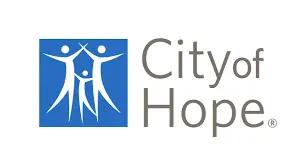
Baseline Muscle Mass May Be Predictive of CAR T-Cell Therapy Outcomes

Retrospective research suggests that low skeletal muscle mass at baseline may negatively impact outcomes in patients receiving chimeric antigen receptor T-cell therapy.
Skeletal muscle measurements may be relevant for risk stratification prior to chimeric antigen receptor (CAR) T-cell therapy, including the risk of a patient developing immune effector cell-associated neurotoxicity syndrome (ICANS) and disease response, according to findings from a retrospective cohort study.1
“CAR T has changed the landscape for relapsed DLCL. For patients with early relapse, it is the preferred therapeutic option now. We will need long-term data to see if the benefits are prolonged, but the randomized controlled trials were definitive vs standard-of-care [autologous stem cell transplant] for those who relapse within a year of therapy. For those who relapse late, autologous transplant remains the SOC. It is also a reasonable option to consider for multiple relapses and post-transplant, Jeffrey Schriber, MD, director of hematologic malignancies at City of Hope Phoenix told Targeted Oncology™.
The use of CAR T-cell therapy for the treatment of relapsed/refractory large B-cell lymphoma (LBCL) specifically has been shown to improve progression-free survival (PFS) and overall survival (OS) in patients. However, LBCL is heterogenous, and outcomes vary based on the biology of a patient’s disease and the comorbidities they have.
One characteristic shown to correlate with adverse cancer-related outcomes and all-cause mortality in patients with solid and hematologic malignancies is abnormal skeletal muscle measurements. Low muscle mass, for example, may impact immune response. To better describe low skeletal muscle measurements are associated with CAR T-cell therapy outcomes, CT imaging was conducted before and after treatment.
The cohort of patients who underwent CAR T-cell therapy were all 18 years of age or older with relapsed/refractory LBCL who were treated at City of Hope centers between February 2015 and February 2021. Information obtained from patients’ medical records were to determine the length of hospitalization, admission to the intensive care unit during the initial hospitalization for CAR T-cell infusion, development of cytokine release syndrome (CRS) or ICANS, disease progression, and cause-specific mortality.
Results showed that patients with abnormally low skeletal muscle at baseline were at greater risk of ICANS (HR, 1.74; 95% CI, 1.05-2.87). Patients with abnormally low skeletal muscle also had a longer mean length of hospitalization at 27.7 days vs 22.9 days in patients with normal muscle mass (P < .05). Independently, patients with low skeletal muscle at baseline also had a higher risk of disease progression (HR, 1.70; 95% CI, 1.11-2.57) and worse survival (HR, 2.44; 95% CI, 1.49-4.00) at 1 year compared with patients who had normal muscle mass at baseline.
Patients who had high lactate dehydrogenase (LDH) levels at baseline showed poor 1-year PFS of 17% and OS of 12% vs patients who had normal muscle mass at baseline (P < .001).
Overall, there was 5-fold risk (HR, 5.34; 95% CI, 2.97-9.62) of disease progression and a 10-fold risk (HR, 9.73; 95% CI, 4.81-19.70) of death among patients with low skeletal muscle and LDH at baseline compared with patients who had normal muscle mass.
“Patients with a low muscle mass can be due to tumor-causing wasting and may be a marker of disease resistance. The group with high LDH and low MM who did so poorly may represent such a group. The challenge is whether you then determine that this is a group to whom we do not offer therapy or look for alternatives, said Schriber. “That is a big step to take based on retrospective studies such as this. The authors themselves note the findings are preliminary and need prospective trials to validate. An important question, if validated, is whether measures can alter this (pre-rehab nutritional support), or if it is inherent in the disease itself.”
Overall, data from 280 patients were screened for the study. Fifty-four patients were excluded because they had abnormal CT scan > 60 days prior to CAR T-cell therapy. The 226 patients included had a median age of 63.1 years (range, 18.5-82.4). The population was predominantly male (65.9%) and non-Hispanic White (50.9%). Twenty-two percent of the population was Hispanic, 16.8% was Asian, and other races and ethnicities made up the remaining 10.2% of patients.
The baseline Karnofsky performance score was ≥ 90 for 69.0% of patients. Most patients included in the study had de novo LBCL (64.2%) and had received a 3 or fewer prior lines of therapy (59.7%). Previous hematopoietic cell transplant was received by 17.3% of the study population, and their pre-lymphodepletion LDH level was < 271 UNL in 67.3%.
The largest node diameter was a median of 2.30 cm (range, 0-17.2). Disease status at infusion was progressive disease at 76.1%, stable disease/complete response in 19.5%, and partial response in 4.4%. More than 46% of patients in the study were on a previous clinical trial.
In terms of CAR T-cell products, 51.3% of patients received axicabtagene ciloleucel (axi-cel; Yescarta), 31.9% received lisocabtagene maraleucel (liso-cel; Breyanzi), and 16.8% received tisagenlecleucel (Kymriah).
According to the study investigators at City of Hope, the information from this retrospective analysis can be utilized when stratifying a patient’s risk prior to CAR T-cell therapy. It may also be helpful for rehabilitation and nutritional optimization before and after lymphodepletion.
“The biggest issue is how to interpret the results and whether they will change how we treat and choose patients. One of our most considerable challenges is that CAR T is often used in patients with terrible prognoses. Can we define a group where the risks are not worth the benefit? However, it is challenging,” Schriber said in conclusion.
REFERENCE:
Lee K, Iukuridze A, He T, et al. Association between pretreatment skeletal muscle and outcomes after CAR T-cell therapy. J Natl Compr Canc Netw. 2023;21(4):373-382.e1. doi:10.6004/jnccn.2022.7100.








































